
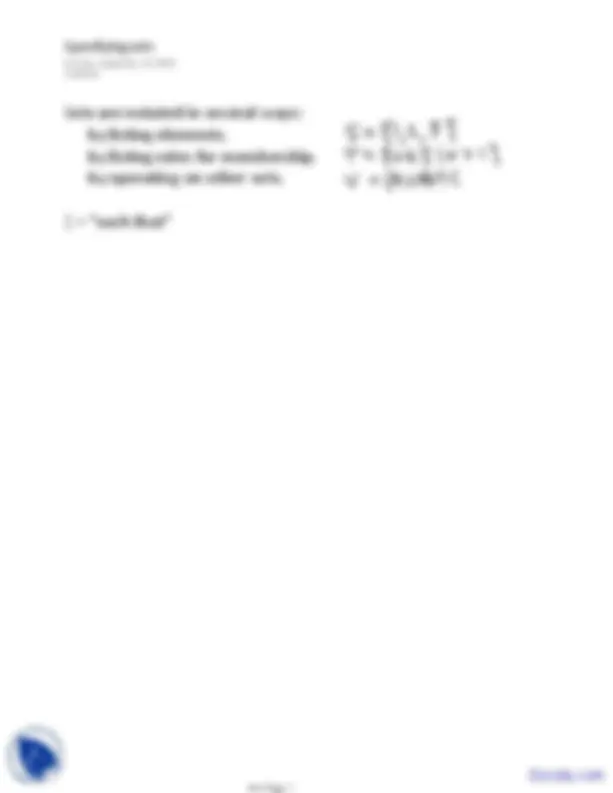
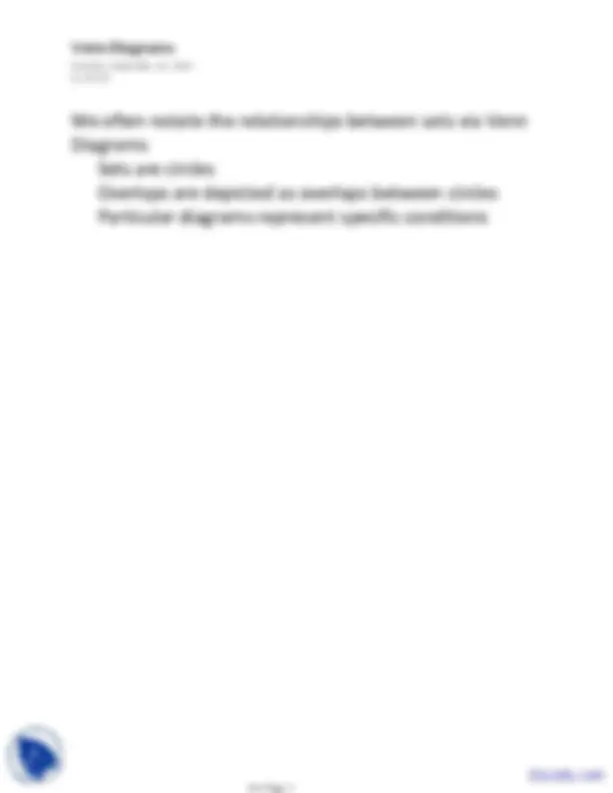
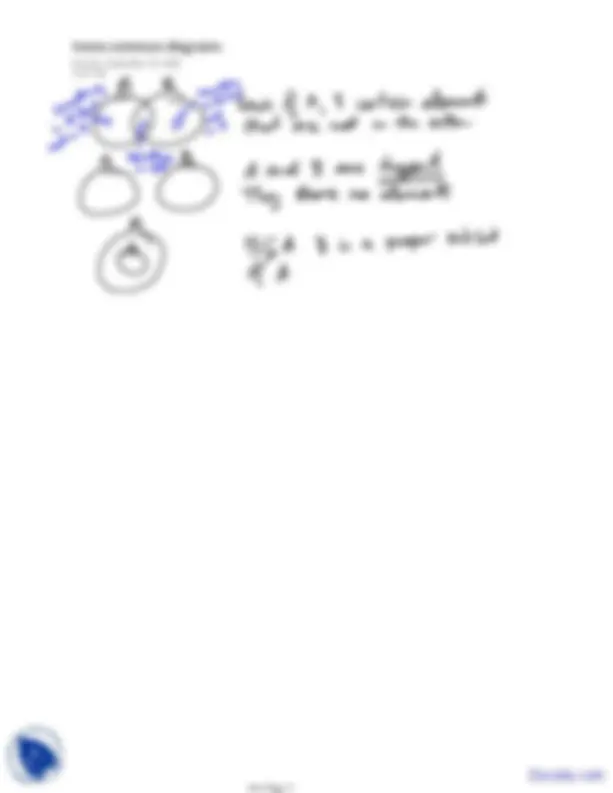
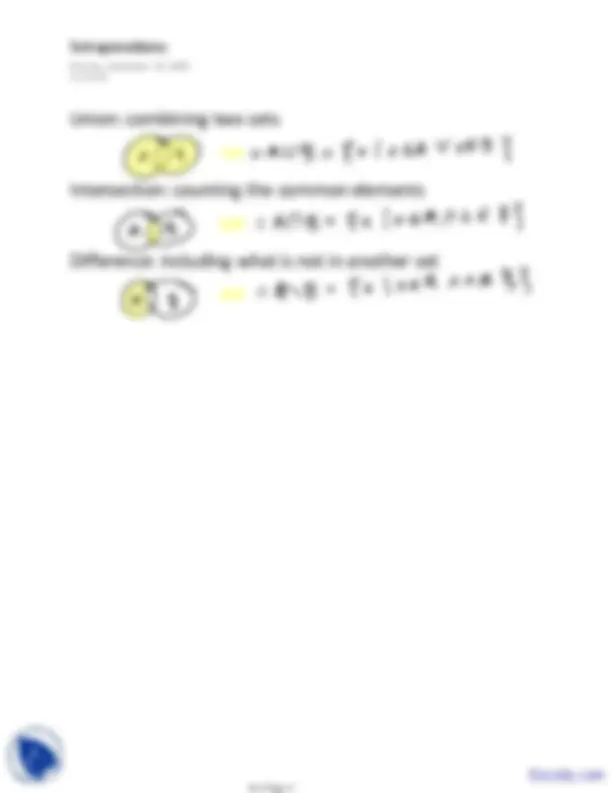
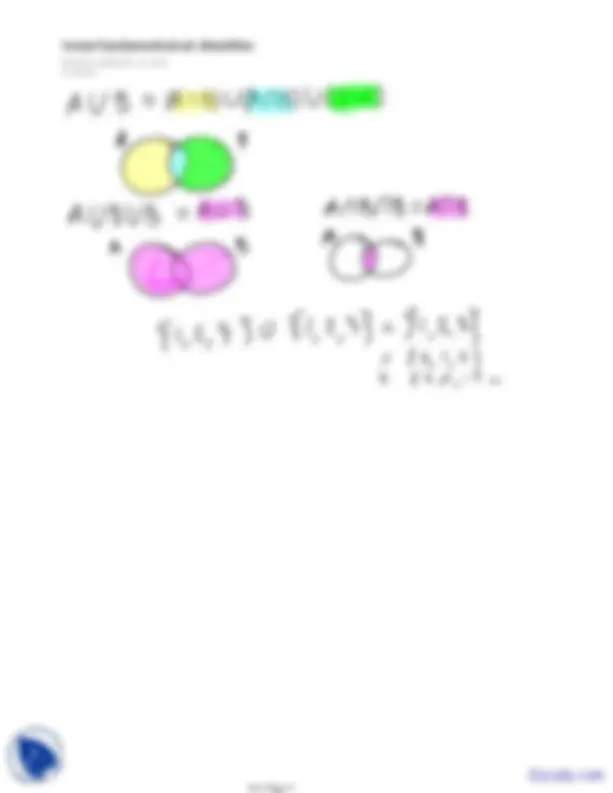
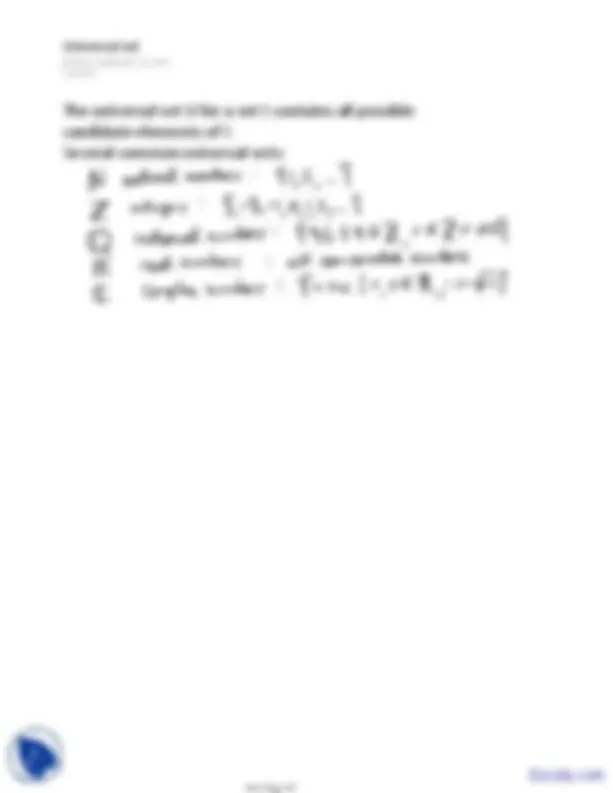
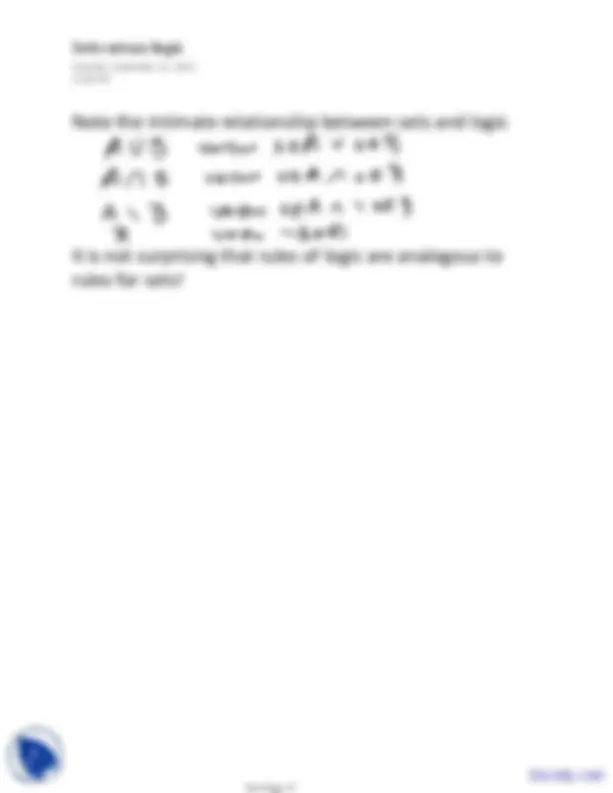
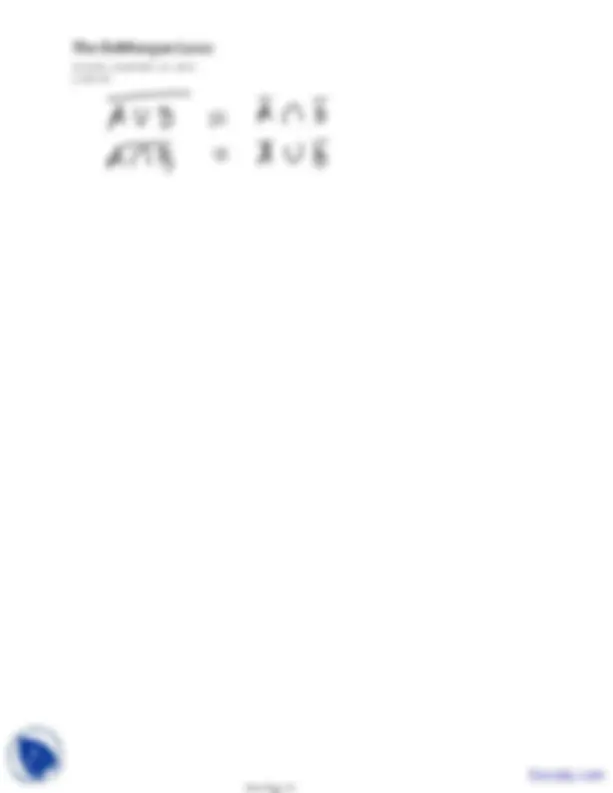
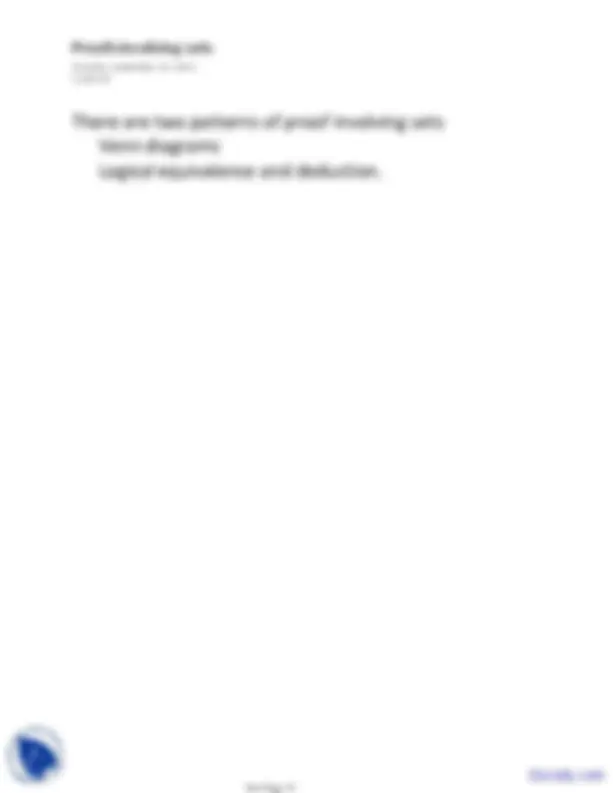
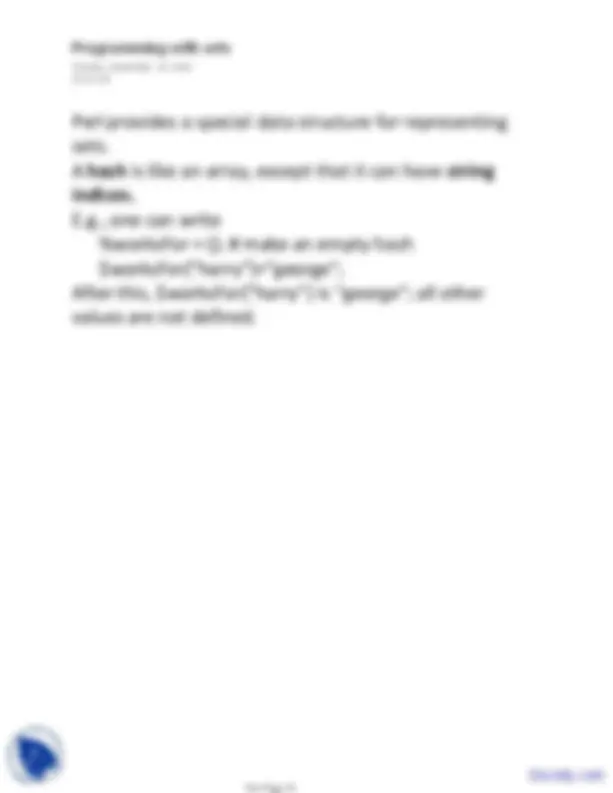
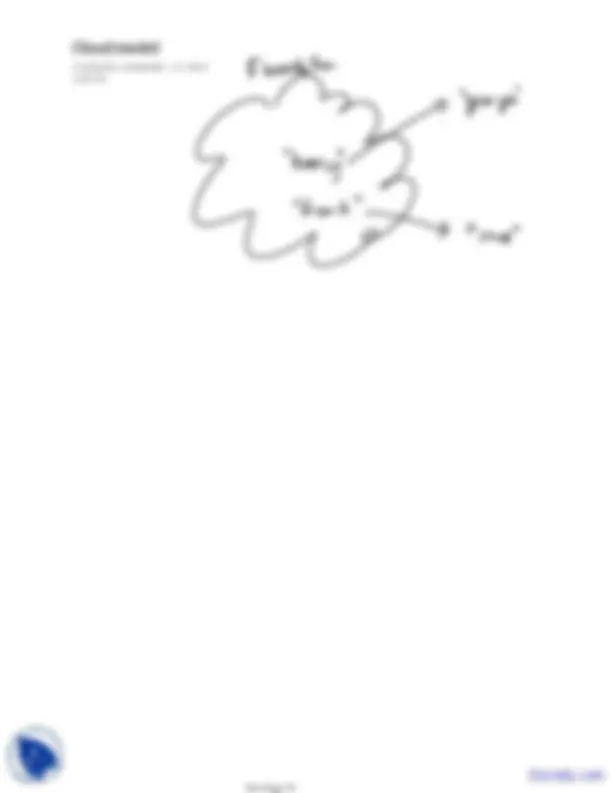
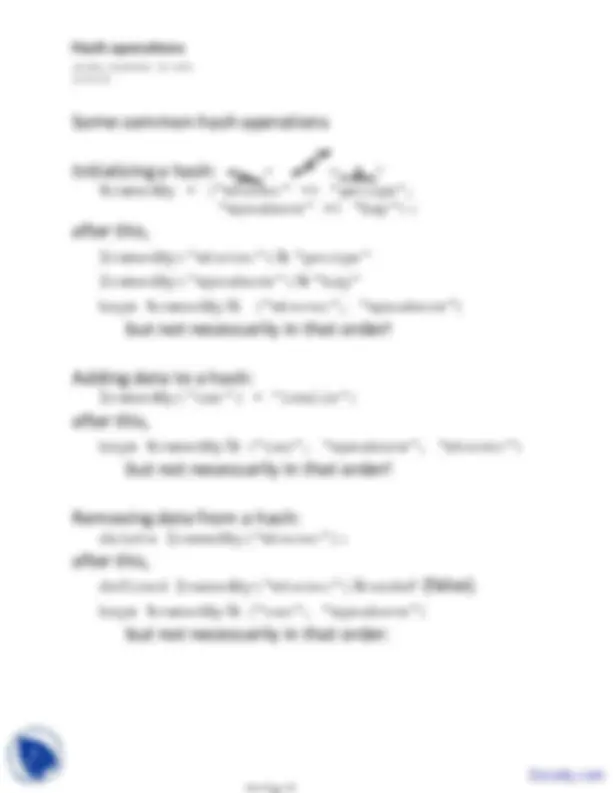

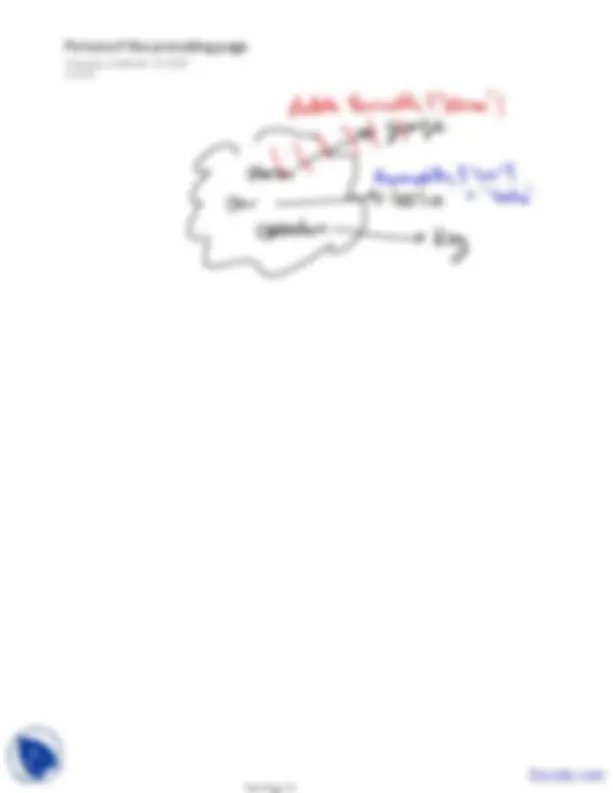
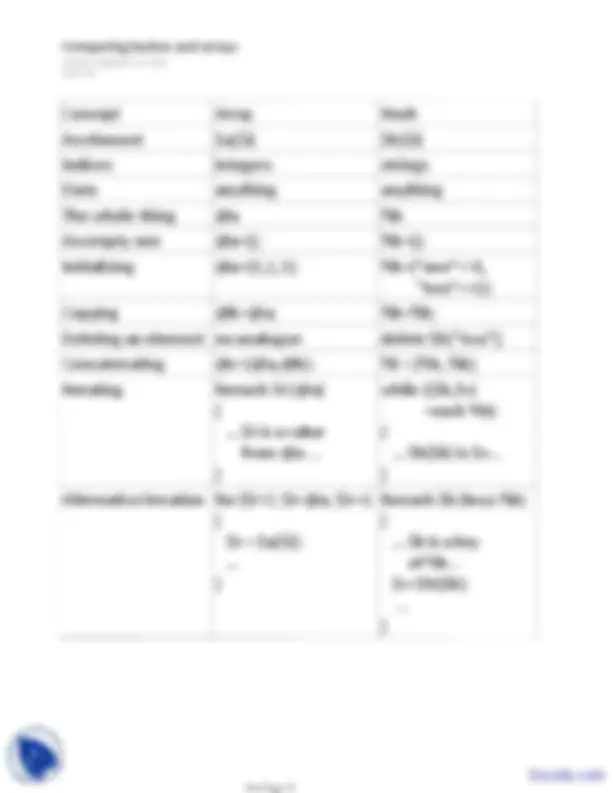
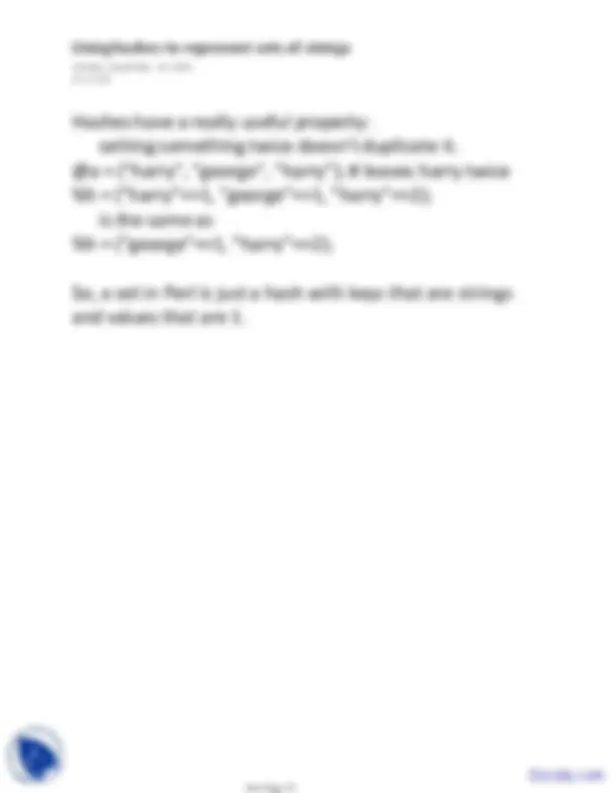
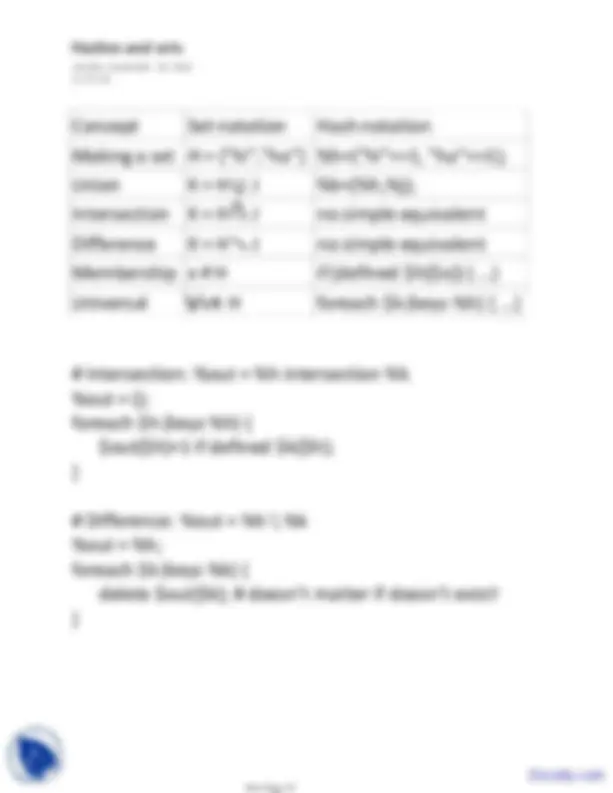
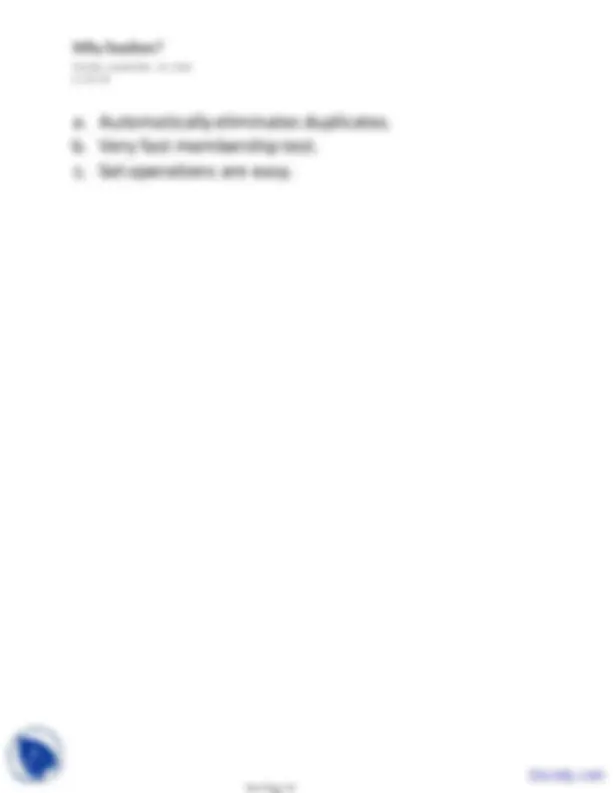
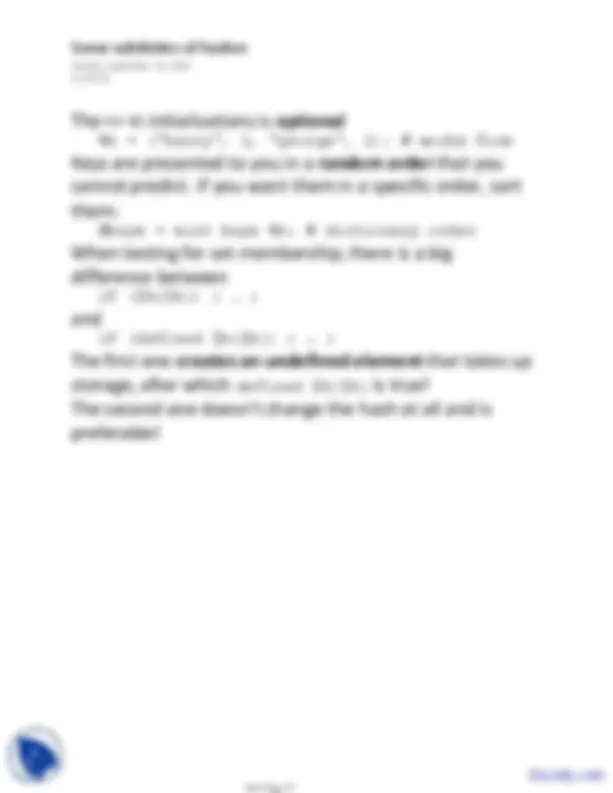
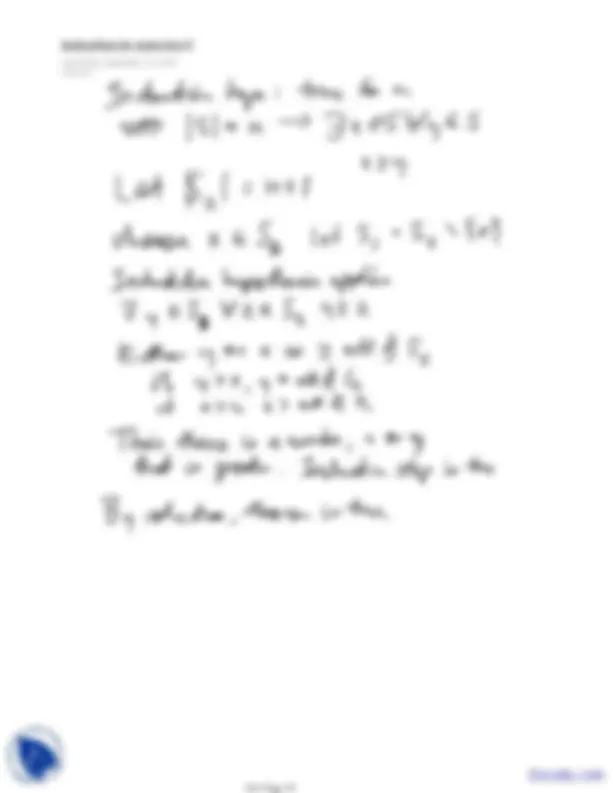


Study with the several resources on Docsity

Earn points by helping other students or get them with a premium plan


Prepare for your exams
Study with the several resources on Docsity

Earn points to download
Earn points by helping other students or get them with a premium plan
Community
Ask the community for help and clear up your study doubts
Discover the best universities in your country according to Docsity users
Free resources
Download our free guides on studying techniques, anxiety management strategies, and thesis advice from Docsity tutors
An introduction to sets, including their concept, notation, and basic operations such as union, intersection, and difference. The document also discusses the relationship between sets and logic, as well as the use of sets in perl programming. Sets are collections of unique elements, and this document covers their representation and manipulation.
Typology: Lecture notes
1 / 28

This page cannot be seen from the preview
Don't miss anything!





















represents an unordered collection with no duplicates A set S: ( an ordered collection is called a sequence) ( a set that can contain duplicates is often called a multiset). Sets Saturday, September 18, 2010 11:24 AM Docsity.com
S = { "George", "Frank", "Susan" } is a set of three strings. "George" ϵ S "George is in S" "Sue" ϵ S "Sue is not in S" T = {"George"} T S "T is a subset of S": true S T "S is a superset of T": true T S "T is either a subset of S or equal to S": true S T "S is either a superset or equal to T": true T S "T is a proper subset of S": true S T "S is a proper superset of T": true T S "T is not a subset of S": false S T "S is not a superset of T": false A proper subset of S is a set T such that there exists at least one element in S that is not in T. Set notation Saturday, September 18, 2010 11:26 AM Docsity.com
Sets are circles Overlaps are depicted as overlaps between circles Particular diagrams represent specific conditions We often notate the relationships between sets via Venn Diagrams Venn Diagrams Saturday, September 18, 2010 11:36 AM Docsity.com
Some common diagrams Saturday, September 18, 2010 11:37 AM Docsity.com
A few pictures of Venn Diagrams Wednesday, September 22, 2010 3:16 PM Docsity.com
Union: combining two sets Intersection: counting the common elements Difference: including what is not in another set Set operations Saturday, September 18, 2010 11:42 AM Docsity.com
The universal set U for a set S contains all possible candidate elements of S Several common universal sets: Universal set Saturday, September 18, 2010 11:49 AM Docsity.com
The set complement of a set is the set containing every element except the set. Complements depend upon the choice of universal set. Suppose U= Set complement Saturday, September 18, 2010 11:50 AM Docsity.com
Note the intimate relationship between sets and logic It is not surprising that rules of logic are analogous to rules for sets! Sets versus logic Saturday, September 18, 2010 12:05 PM Docsity.com
The DeMorgan Laws Saturday, September 18, 2010 12:08 PM Docsity.com
Theorem: Limited to 2 or 3 sets: 4 sets can't be drawn in the plane! Example of proof involving sets Saturday, September 18, 2010 12:10 PM Docsity.com
Theorem: Proof by logic Saturday, September 18, 2010 12:13 PM Docsity.com
Cloud model Wednesday, September 22, 2010 3:35 PM Docsity.com
Some common hash operations "speakers" => "kay"); %ownedBy = ("stereo" => "george", Initializing a hash: $ownedBy{"stereo"} is "george" $ownedBy{"speakers"} is "kay" but not necessarily in that order! keys %ownedBy is ("stereo", "speakers") after this, $ownedBy{"car"} = "leslie"; Adding data to a hash: but not necessarily in that order! keys %ownedBy is ("car", "speakers", "stereo") after this, delete $ownedBy{"stereo"}; Removing data from a hash: defined $ownedBy{"stereo"} is undef (false). but not necessarily in that order. keys %ownedBy is ("car", "speakers") after this, Hash operations Monday, September 20, 2010 10:46 AM Docsity.com